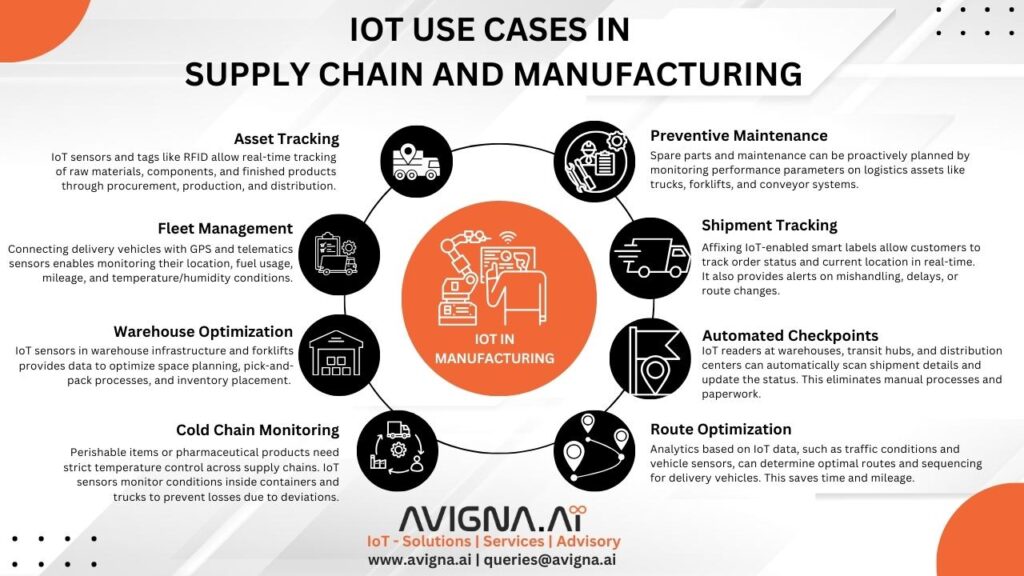What Are The Benefits of IOT For OEM Industry?
The Internet of Things (IoT) is bringing in a new era of possibilities for traditional OEMs. Even sectors that were once hesitant about technology, like furniture and home equipment, are now embracing these advances.
IoT has transformed everyday products into smart, interactive devices. A basic table can now come equipped with wireless charging pads and usage-detecting sensors.
In this article, we will understand how IoT is revolutionizing the way OEMs operate, the benefits they’re reaping, and the challenges they’re encountering.
IoT and Manufacturing Facts
- Did you know that by 2023, about 70% of all cars will be hooked up to IoT?
- Thanks to IoT, manufacturers have boosted their average income by a whopping 28.5%.
- Companies think IoT and similar digital tech can increase productivity by at least 12%.
- The Industrial Internet of Things (IIoT) market is also booming. In 2021, it was worth over $263 billion. It is projected to reach around $2.1 trillion by 2028.
- And get this, over half of all new business systems will include some IoT part by 2024. Exciting, right?
The IoT Revolution Among OEMs
Over the past ten years, OEMs have transformed their regular products into smart solutions. Take, for example, manufacturers of speakers and music systems.
Their products have incorporated digital assistants like Google Assistants and Amazon Alexa. This trend has been followed by many OEMs, bringing digital assistants into new product lines.
Common trends in the IoT sector include:
- Equipping machines with sensors for predictive maintenance.
- Providing software solutions for productivity and efficiency data.
- Integrating IoT remote monitoring into existing equipment.
Giants like Hitachi, Siemens, and Bosch are adding sensors to their tools. It provides users with maintenance and performance data.
With the data gathered from these industrial IoT solutions, businesses aim to:
- Lower energy use
- Enhance safety
- Manage maintenance more efficiently.
While introducing IoT into their product lines, OEMs across consumer and enterprise sectors also incorporate similar technologies into their manufacturing processes. Many have invested in IoT predictive maintenance systems in their production lines.
This is helping them to enhance their maintenance practices. Numerous OEMs have also automated their processes with industrial IoT solutions.
Also Read: Securing Your IoT Devices Against Cyber Breaches
How IoT Benefits OEMs?
With the Internet of Things (IoT), you can quickly share crucial data collected by your devices from anywhere in the world. This brings tons of new chances for you as an equipment manufacturer.
You can make your products even better by making items that can interact with digital tools. They will be more efficient and add useful services and features. This will keep you ahead of competitors and open new ways to earn money without making more products.
Let’s see how IoT benefits manufacturing companies:
Make Products More Valuable
IoT can make your equipment more valuable by including additional services. These could be free or paid for.
Provide Personal Services
Offering services when needed is a good way to make your products stand out. For example, paying for services like communication has become popular in the car industry.
Services like OnStar from GM, Ford SYNC, BMW Assist, and Mercedes mbrace offer:
- Safety
- Emergency help
- Hands-free calls
- Direction Guidance
- Remote checking of the car.
Understand Diagnostics and User Behavior
You can also use IoT to examine and share checks with users.
For instance, in cars, built-in checks help drivers to keep track of things like:
- Tire pressure
- Engine oil levels
- Fuel usage
- Washer fluid levels, and more.
This not only keeps drivers safe but also makes cars last longer.
Such shared diagnostics can be especially useful for businesses with many vehicles. Similar uses can be found in farm equipment, heavy machines, home appliances, and more.
Also Read: How IoT Can Make Smart Homes More Efficient?
Carry Out Updates Over the Air (OTA)
Another IoT benefit is it also lets you keep products updated through OTA updates. Tesla is famous for using this to ensure their cars always have the latest features.
Let’s think about a car dealership with 100 cars. Updating each car individually with the latest features would be a headache. But with OTA, updates can be done remotely and centrally.
In the business world, OTA updates help keep company devices secure. This improves security and reduces downtime, with less interruption to work.
Improve Customer Experiences
IoT benefits OEMs and helps them make their customers’ lives can get a whole lot easier. Here’s how:
Download Digital Content
Give your products the power to download digital goodies like music, podcasts, movies, and more.
For instance, if you make exercise equipment, your users can stream workout videos from YouTube. If you make smart speakers, they can download audiobooks or music directly.
Create Unique User Profiles
Enable users to save their settings across your devices. For example, if you sell treadmills, each user likely has their favorite settings.
These could be saved on an app, so their preferences are ready to go no matter which of your products they use.
Schedule Maintenance Easily
With IoT, scheduling repair work can be a breeze. For instance, if you make farming equipment, your customers must fix them occasionally.
With an app that keeps track of the equipment’s health, users can easily contact mechanics and share any issues. Mechanics, in turn, can instantly get crucial details about the equipment.
Use Location Intelligence
Lastly, IoT allows you to gather location data from various devices. Here’s how you can use it:
Track Lost or Stolen Equipment
If a device goes missing, an app can help find it. Companies like Apple use this feature in their ‘Find My’ app.
But with Bluetooth trackers, you can find almost anything – keys, wallets, hospital equipment, and more. If a lost device connects to Wi-Fi, the network’s name can give away its location.
Use Geofencing for Better Engagement
Another interesting one from IoT benefits for OEM is geofencing. A geofence is a virtual boundary set up in a real area using GPS or other technologies. When a mobile device crosses into or out of this area, it can trigger actions like notifications, alerts, ads, and more. This is excellent for tracking vehicle fleets, shipments, marketing data, and more.
Find Marketing Opportunities
By studying where your users go, you can understand their behavior and interests. Understanding the Wi-Fi networks people use can reveal where they go. This info can help you make wise choices for your business.
Read: How to calculate Enterprise IoT ROI?
More Ways to Earn
As an equipment manufacturer, the great thing about IoT is that you can keep making money even after you sell your products. It’s like selling printers and then cartridges. Here’s more on this IoT benefit.
For example, if you sell enterprise systems, you can offer automated monitoring as a subscription service. You could also provide cloud-based analytics along with your IoT products. You’ll see these trends in consumer IoT products too.
Keeping Track of Stock
Thanks to IoT, you can now easily monitor your supply chain events. These smart systems let you track each item in your inventory around the world. It can also alert you if anything isn’t going as planned.
This helps in:
- Having a clear view of your stock levels.
- Keep you informed about ongoing work.
- Predicting when new supplies will arrive.
Plus, managing inventory has never been easier with radio frequency identification (RFID). Each item gets an RFID tag with a unique ID number that carries all the info about the item. RFID readers scan these tags, and the data is sent to the cloud for review.
So you get a clear picture of what’s in stock, what’s in progress, and when new supplies will appear. This saves costs and keeps things running smoothly.
Keeping Up the Quality
In the old days, items were made and then tested, and any flaws were hopefully found and fixed before hitting the market. But now, IoT has made quality control proactive.
Thermal and video sensors gather detailed data about a product at each stage of its lifecycle. Monitoring the manufacturing equipment also helps spot deviations from the standard settings.
This tech can even give feedback on how customers feel about a product. All these insights help spot and fix quality issues. Just look at RJ Corp, India’s biggest Pepsi bottler, which uses IoT sensors to collect real-time data to ensure top-notch quality.
Boosting Efficiency
Energy bills are a major expense for manufacturers. The bills show the total energy the factory uses, but it’s tough to see where you could be more efficient. Yet, nearly 77% of companies still rely on monthly utility bills or basic monitoring tools for energy data.
But IoT can bridge this gap. It helps collect detailed data right down to individual devices. Have an underperforming device? IoT will find it, so you can work on making it more efficient.
The real-time data can highlight things like:
- Energy use outside of work hours
- Suggest better production schedules
- Identify other ways to save.
Managers can even compare different locations to find hidden inefficiencies and cut waste.

Challenges with IoT
But using IoT in your operations isn’t without its challenges. Here are some you might face:
Finding the Right People
The biggest challenge could be finding the right skills. Traditional manufacturers often use parts from others. This means they might not have experts who fully understand the tech they’re selling.
Outdated Tech and Processes
If your systems are old, they might not work with modern architectures. This can make IoT integration hard. So, if you’re just starting to add electronics to your items, consider changing your strategy and bringing in experts. You must also change how you work with vendors, ensure quality, and build strong products.
Security
Without proper expertise, IoT can open you and your customers to security threats. To build safe products, you must think again about your usual product lifecycle.
After-sales, maintenance, and support will have to include regular security updates. You should have a system to track vulnerabilities, create and test updates, and roll them out with as little downtime as possible.
Dealing with Messy Data
More devices linking up means we’ll see more messy data – that’s info that isn’t neatly arranged. This could be hard to manage due to its large amount, quick arrival, and varied types.
The real test for businesses is determining which data is valuable because only good-quality data can be turned into useful actions.
Fun fact – a survey found that 80% of today’s data is unstructured, which means it can’t be stored in the usual SQL format.
Catching Data Correctly
Since IoT relies heavily on sensors for signals and networks for distribution, incorrect data might be recorded due to issues like a power outage.
Wrapping Up
In the future, the Internet of Things (IoT) will be important. It will handle many daily tasks, helping us run machines easily. This can simplify our lives. Think of devices doing regular tasks on their own, saving us time. Yes, there may be issues like data safety. But, the amazing benefits IoT offers to manufacturers could greatly change the future of the industry.
Ready to embrace the future of IoT? Contact us to know how we can elevate your OEM business with seamless IoT integration. Connect with us on LinkedIn.



